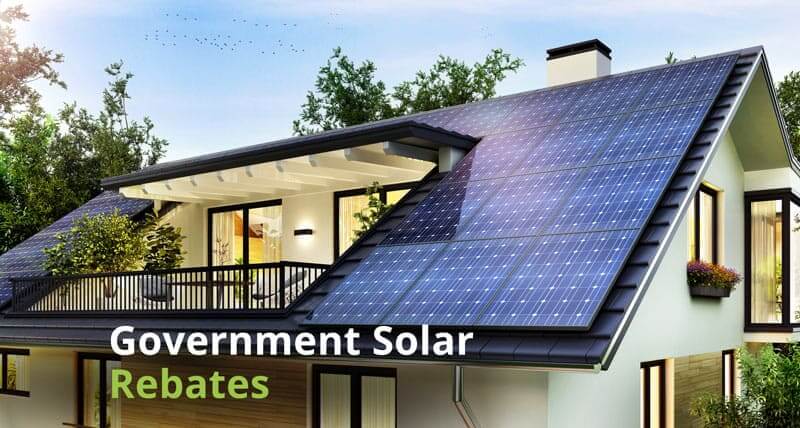Home Do Solar Panels Store Energy? – How Solar works
Do solar panels store energy?
If you’ve recently installed solar panels on your home, or are contemplating doing so, a frequent query that puzzles quite a few folks is whether solar panels have the capacity to store energy.
The answer is No. Solar panels can’t store the energy they produce for later use. To store solar energy, you’ll have to make use of solar batteries or feed-in-tariffs.
Solar panels only absorb sunlight and convert it into Direct current (DC) electricity. The current then goes through the inverter, where it’s converted to an Alternating current (AC) for use in the house.
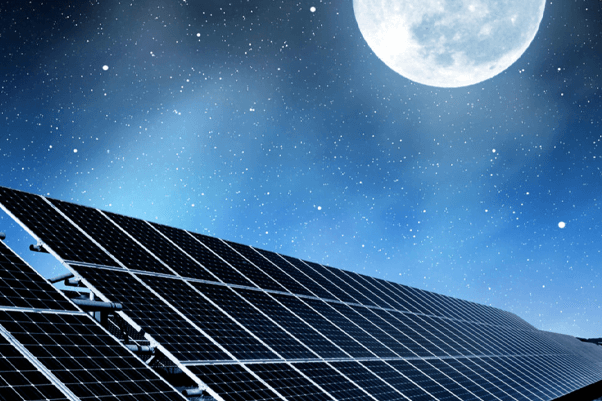
Table of Contents
ToggleHow do we use solar energy at night?
As mentioned above, even though solar panels don’t work at night, you can still use solar energy at night in your home. Most homeowners take advantage of the excess electricity generated during the day to establish a 24-hour power supply.
They do this in two ways:
- Using Battery storage
- Using feed-in tariffs
How to use Battery storage to store solar energy
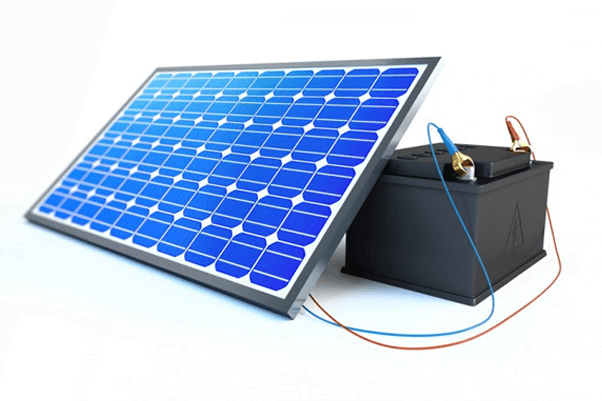
The concept of solar batteries for energy storage is very simple. Your solar panels store the excess energy produced during the day, which you can then use at night.
Assuming your solar system is designed to produce more power than is needed in your home, the excess goes to the solar batteries. Once your batteries are fully charged, you can send the surplus energy back to the grid.
If your batteries are empty, you’ll have to depend on the grid for power at night.
The amount of energy you can store in the batteries depends on its capacity. Bigger batteries will store more power, but you’ll have to ensure that it’s the right size for your home.
How to use feed-in tariffs to store solar energy
Unlike battery storage, a feed-in tariff, or net metering, doesn’t refer to a storage device. It’s a solution for homeowners who don’t have solar energy batteries, allowing them to ‘store’ their power through the grid.
Here’s how this works: If your solar panels generate more energy than what your house needs during the day, you can export that extra power to the grid.
In exchange, your utility company will give your account utility credits. Therefore, when you use power from the grid at night, your credits will offset most, if not all, of your bills, leaving you with a very affordable power bill.
Keep in mind: This works for grid-tied solar systems only.
Feed-in tariffs Vs. Battery storage
When choosing between solar energy storage solutions, both feed-in tariffs and batteries have their merits and demerits.
Below is a table looking into the pros and cons of opting for either of these options.
| Pros | Cons | |
|---|---|---|
| Feed-in Tariffs | Cheaper as it doesn’t need batteries and other equipment Net metering cuts down power bills Homeowners can earn from selling the SRECs their system produces Requires little maintenance | Still relies on the grid during cloudy days and at night (No backup) The system shuts down when the grid is down |
| Battery Storage | Gives you complete independence from the grid | Expensive because of the solar batteries Increased maintenance Surplus energy may go to waste No backup at night if the batteries are depleted |
What is the best way to store solar energy?
There’s no ‘best’ way to store solar energy for homeowners. Your decision should be based on your budget, how fast you want your solar ROI, and how independent you want to be from the grid.
For homeowners who want complete independence from the grid, using solar battery storage is the best way for them – although it’s more expensive and takes longer to pay back.
However, getting a solar battery is not wise if your home enjoys good rates from their feed-in tariffs.
For homeowners who need a cheaper way to offset their power bills, using the feed-in tariff is the best solution. It has a faster ROI, and the initial costs aren’t too high.
Nevertheless, in states where utility companies are cutting down on their rates, opting for a solar battery can be a smart long-term investment.
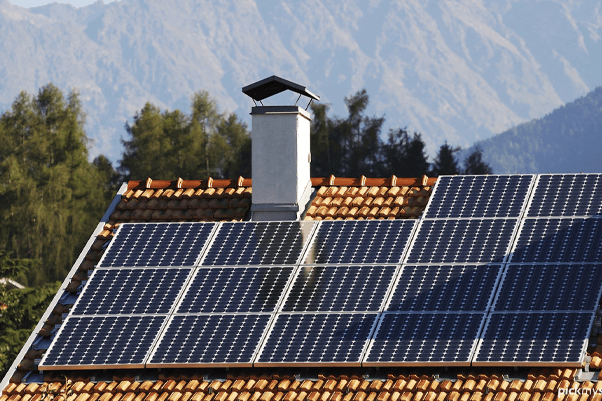
In general, solar panels absorb solar energy and convert them into electrical energy.
The panels absorb sunlight through their photovoltaic cells. When sunlight reaches these cells, the photons from the light create an electric field that produces a current.
This current (DC) is then converted into AC by the inverter which becomes the electricity we use in our households.
Do solar panels work at night?
No. Solar panels rely on sunlight to generate electricity, and so at night, this becomes impossible. Even when there’s moonlight or light from street lights, its output is too low to power your home.
Nonetheless, you can store the energy generated during the day for use at night. This is made possible by the use of solar battery banks and net metering.
How many batteries would I need to power my house at night?
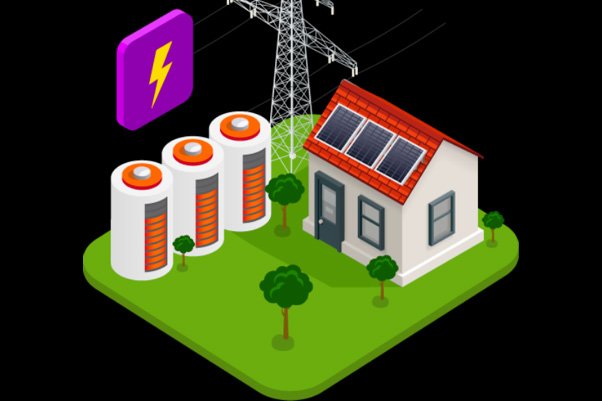
The number of batteries you’ll need for your home will vary depending on your home’s power consumption. You’ll need to do a calculation of your power consumption at night to get a good estimate.
For instance, assuming we use the average Australian home consumption of 23kWh per day, find out how much of these is used at night.
Keep in mind, since most people are home at night, the consumption is higher.
If you use 65% of the solar power produced at night, then your batteries will have to store at least 15kWH daily.
Usually, a battery with a capacity between 4 to 8kWh is enough for a four-person home. But if your home uses 15kWH, you may need at least 2-4 batteries.
Keep in mind; If your battery system is too small, you won’t have enough power to cover your nights. If it’s too big, your battery will store a lot of unnecessary energy, which might reduce its lifespan. So be precise in your calculations, and seek help from an expert if you can.
Can I store solar energy without batteries?
Practically no. You’ll need solar batteries to store the electricity generated for later use. However, if you don’t have batteries, you can also store your solar energy in the grid.
While this isn’t technically storing energy, you can send back all your excess electricity to the grid in exchange for credits. The more credits you accumulate, the less you’ll have to pay in utility bills.
In good months, your credits may completely eliminate your power bills.
Can a 10kW solar system power a house?
Yes! The average power consumption for an Australian home is 22kWh per day. The 10kW solar system produces nearly double that amount in a day at around 40kWh.
For a small house, this would be more than enough to run the entire home and feed the surplus to the grid. However, with the cost of a 10kW system being relatively high, smaller homes are advised to invest in smaller solar systems – maybe the 5kW system or the 6.6 kW system.
Opting for this system based on its high electricity generation will mean a longer payback period for small homes. If you consume less than 40% of the total generated electricity from the 10kW system, that’s a poor investment.
The 10kW solar system is a good choice for large homes or small offices with high daytime power consumption. It can also be a good choice for homes that want to go completely off-grid.
FAQs
Solar panels don’t store solar energy. They only convert sunlight into electricity. However, solar batteries can store the solar energy produced for several days.
Home solar batteries can last anywhere from 5-15 years, depending on the type, brand, and quality. You’ll therefore need to replace your batteries at least once within the lifetime of your solar system.
Table of Contents
Toggle


